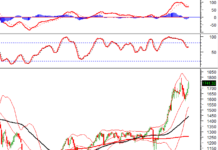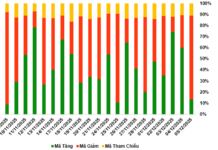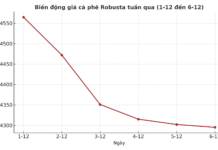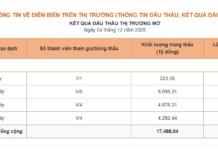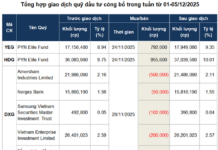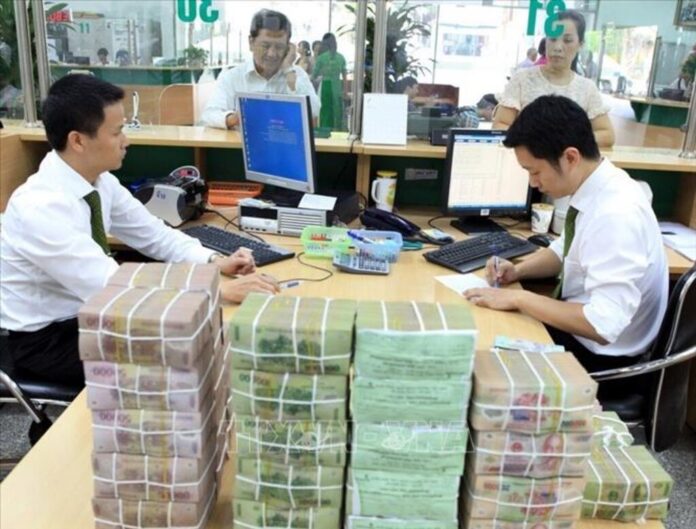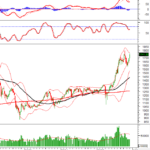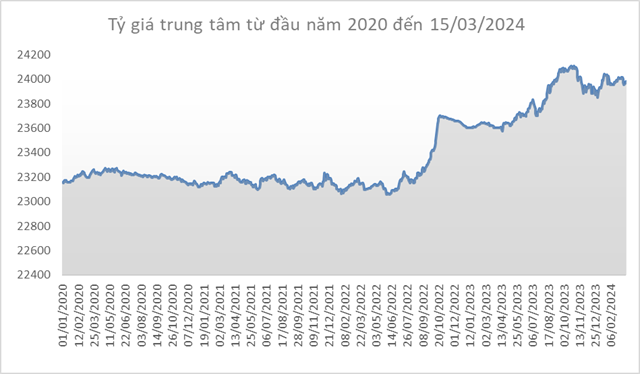According to data from FiinPro, the after-tax profits of listed banks increased by 22% year-on-year, continuing to contribute significantly to the overall market profits. Alongside impressive profit growth, the picture of bad debt, along with concerns about the asset quality of banks, is also a matter of public interest.
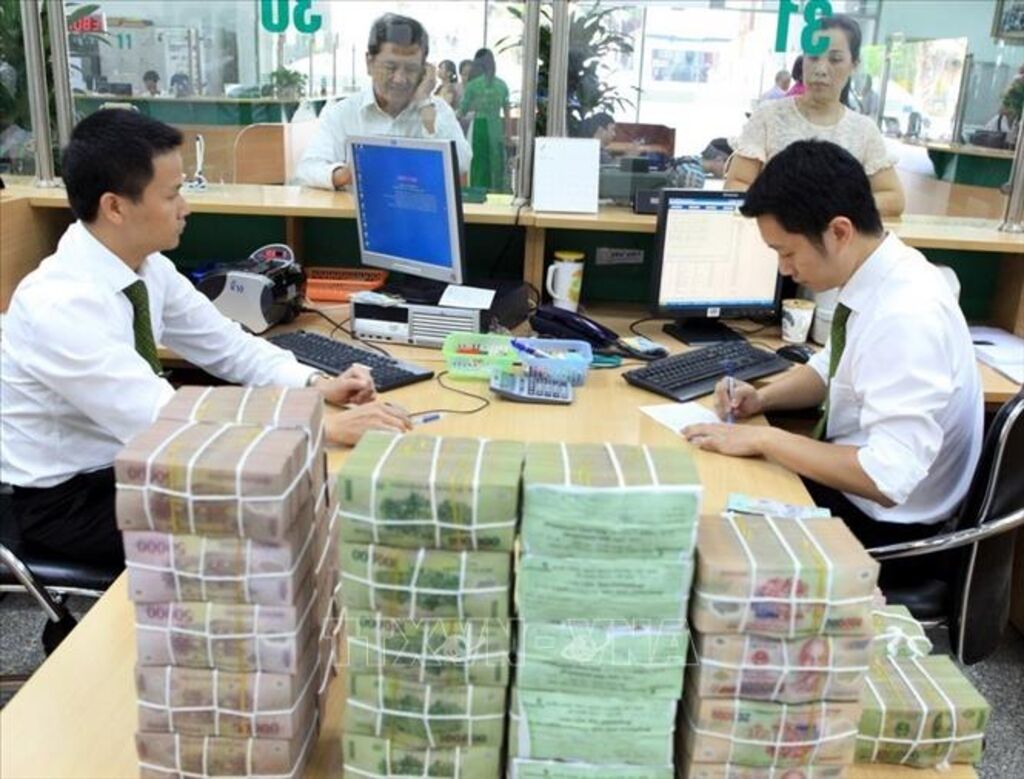
Activities at Vietcombank Hanoi Branch. Illustrative image. Photo: Tran Viet/VNA
Non-performing loans on the rise
At a workshop on bad debt handling held in early August 2024, Le Trung Kien, Deputy Director of Department 4, the State Bank of Vietnam’s Inspectorate and Supervision Agency, said that as of the end of June 2024, the bad debt ratio of the entire system was 4.56%, higher than the 4.55% at the end of 2023 and 2.03% at the end of 2022. Total non-performing assets, debts at the Vietnam Asset Management Company (VAMC) not yet settled, and potential debts of the credit institution system as of the end of June 2024 accounted for 6.44% of total outstanding loans.
The increase in the bad debt ratio was recorded in most banks amid a gloomy economic context and was partly impacted by CIC classification. Especially, the difficulties in the real estate market over the past time have increased bad debts related to real estate lending at credit institutions, including both corporate and individual customers.
According to statistics from Agribank Securities Joint Stock Company (Agriseco), among the banks that have published their second-quarter 2024 financial statements, the total special mention loans (substandard loans) showed a relatively strong upward trend, increasing by about 12% compared to the end of 2023. Some banks recorded an increase compared to the beginning of the year, including MSB (+33%), VPB (+25%), OCB (+23%), and TCB (+9%)…
Meanwhile, the loan loss provision buffer is showing a significant downward trend after credit institutions strengthened their provisions in the previous period. For banks that have published semi-annual figures, the loan loss provision ratio (LLR) decreased from 79% at the beginning of the year to 68% as of June 30, 2024.
Banks with high loan loss coverage ratios continue to be concentrated in the state-owned bank group, such as VCB (212%), BIDV (132%), CTG (113%), and Agribank (114%). In contrast, most private joint-stock banks saw a decrease in their buffers, including TCB, LPB, MBB, HDB, VPB, STB, and ACB…
Commenting on the bad debt situation of credit institutions, Mr. Dao Minh Tu, Permanent Deputy Governor of the State Bank, said that bad debts are on the rise and this is a challenge not only for the banking industry but also for the entire economy.
According to Deputy Governor Dao Minh Tu, bad debts are the result of a process and are not due to the weaknesses of the banking industry. Of course, there are some bad debts due to credit officers’ inability to assess customers’ repayment capacity and risks. Still, fundamentally, bad debts are due to objective factors and the general difficulties of the economy, which have weakened customers’ repayment capacity. The State Bank will take more positive measures to ensure credit quality and control bad debts and strengthen risk provisions to ensure banking safety.
Asset quality expected to improve
In the context of rising bad debts, credit institutions are stepping up debt recovery and handling, although this process is facing many difficulties and obstacles.
According to the State Bank, in the first six months of 2024, the entire banking system handled VND167,300 billion of bad debts, an increase of VND52,400 billion (up 45.6%) over the same period last year. Of this, VND82,600 billion was handled through risk provisions, accounting for 49.4% of the total bad debts handled and an increase of 34% over the same period last year. In addition to handling bad debts through risk provisions, customers also repaid VND60,600 billion, VND4,110 billion was recovered through asset auctions, VND2,560 billion was sold to VAMC, and some other forms.
Meanwhile, the pressure to make loan loss provisions is also not expected to increase significantly in 2024, thanks to the State Bank’s issuance of Circular No. 06/2024/TT-NHNN amending and supplementing a number of articles of Circular No. 02/2023/TT-NHNN dated April 23, 2023, on the rescheduling of debt payment deadlines and maintaining the debt group until the end of 2024 to support customers facing difficulties.
This policy is expected to help the banking industry reduce the risk of increasing bad debts and the pressure to increase risk provisions. This contributes to strengthening the buffer for banks, and the business results in 2024 are expected to be more optimistic. At the same time, Circular 06/2024/TT-NHNN will also support borrowers by giving them more time to repay their debts, thereby potentially resolving potential bad debts in the near future.
Although the pressure of bad debts is still high at the moment, many assessments show that it will gradually cool down along with the recovery of the economy.
According to Mr. Barry Weisblatt David, Director of the Analysis Division of VNDIRECT Securities Corporation, although it is acknowledged that asset quality has deteriorated recently, asset quality will recover in the coming months as the Vietnamese economy improves. Moreover, the new Real Estate Law will make it easier for banks to realize the value of mortgaged assets.
“More importantly, we expect strong credit growth, exceeding the State Bank’s target of 15%, to drive income. At the same time, the weakening of the US dollar will reduce the pressure on the State Bank to tighten policies to support exchange rates. This, in turn, reduces the risk of higher interest rate levels, which could affect credit growth,” said Mr. Barry Weisblatt David.
Experts from Dragon Capital Securities Joint Stock Company (VDSC) also believe that the scale of bad debts will decrease slightly by the end of the year as banks have a better pre-provision profit position than in 2023 to continue absorbing and cleaning up their balance sheets. In addition, economic recovery helps reduce the pressure of bad debt formation and speeds up the handling of collateral of bad debts.
In a recent update on the banking sector, Agriseco experts took a more cautious stance on the asset quality of the entire industry, as the economy still needs time to improve, even extending into 2025.
According to Agriseco, there is a differentiation in asset quality among banks. The group of banks with good asset quality will record moderate levels of bad debts and restructured debts, while the group of banks with a high proportion of corporate credit (including corporate bonds) and a low bad debt coverage ratio may face the risk of increasing bad debts and higher provisioning pressure in 2024-2025.
However, overall, Agriseco forecasts that bad debt growth will slow down compared to 2023, as the economy recovers strongly in the last quarter of the year. Supporting factors for the market include improved macroeconomic indicators in the last months of the year, supportive policies of banks through preferential interest rate programs, and the Government’s continued efforts to resolve legal issues to facilitate businesses’ expansion of production and business activities.

